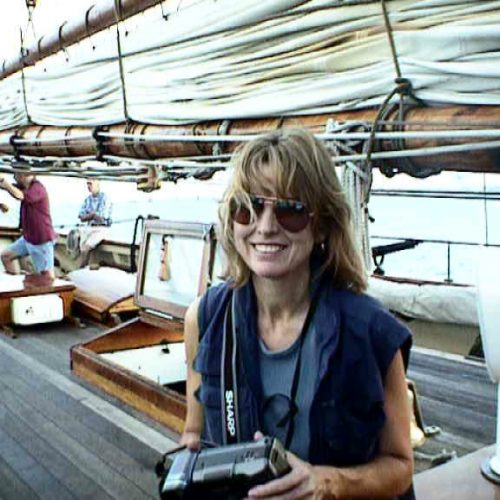25 May 2013
Pride of Baltimore II
Pos: Alongside the Fisheries Museum of the Atlantic, Lunenburg, Nova Scotia
Wx: SSW F 4, Rain, Fog – Classic Lunenburg
Everyone knows the sailors adage “any port in a storm,” meaning that when it’s bad out there, any detestable little hiding hole is preferable to the rocking, rolling, gut-wrenching, bone rattling threats of the open ocean. Those familiar with Nova Scotia also know that Lunenburg is no place of last resort, but instead an idyllic – perhaps fabled, maybe even mythic – haven of traditional maritime culture. So it doesn’t take a storm lure a ship toward the wooden wharves and bright painted buildings of Lunenburg Harbor. In fact it might even take something as powerful as a storm to keep a ship, and her crew, away.
Pride of Baltimore II was having a passage splendid enough to make us consider sailing straight past Lunenburg and on to Cape Canso as we made our way to Miramichi. Clearing the Delaware Bay entrance at midnight on Tuesday, we set four lowers, the foretops’l and jibtops’l and started making over eight knots. At daybreak, the gaff tops’l, t’gallant and stuns’l had her over ten for most of the next 60 hours. With south to southwest winds of 15-25 knots, we had only one maneuver between Cape May and Cape Sable, and were looking at making Cape Canso in 80 hours.
The forecast, while not a storm, was making that plan a stretch – Southerly winds 25-35 knots carrying a 5-6 meter (16-19 foot) sea with them. Choosing between experiencing a beam sea roughly four times Pride II’s freeboard, and the jagged teeth of Nova Scotia’s rocky shore under our lee, or a weekend snug in one of the world’s great ports took about half a boat length to decide.
All told, Pride II was 69 hours exactly from Cape May to taking in sail off the Fisheries Museum. Total distance on the rhumb line 615nm, 685nm including the pair of maneuvers it took to use the south to southwest wind. Depending on which number you use, that’s an average speed of 8.9 or 9.5 knots. Either way, it was one fast passage. In fact, Second Mate Will McLean’s book of sailing ship records includes a similar run made in 1899 by the Schooner William L. Elkins from New York to Halifax – a distance of 599 nm – in the same 69 hours, and calls it “one of the fastest on record.”
The book doesn’t include a specific example of Cape May to Lunenburg, but this run – its near constant weather and incredible pace – is definitely one for our record books.
All best,
Captain Jamie Trost and the Speed Demon Crew of Pride of Baltimore II







